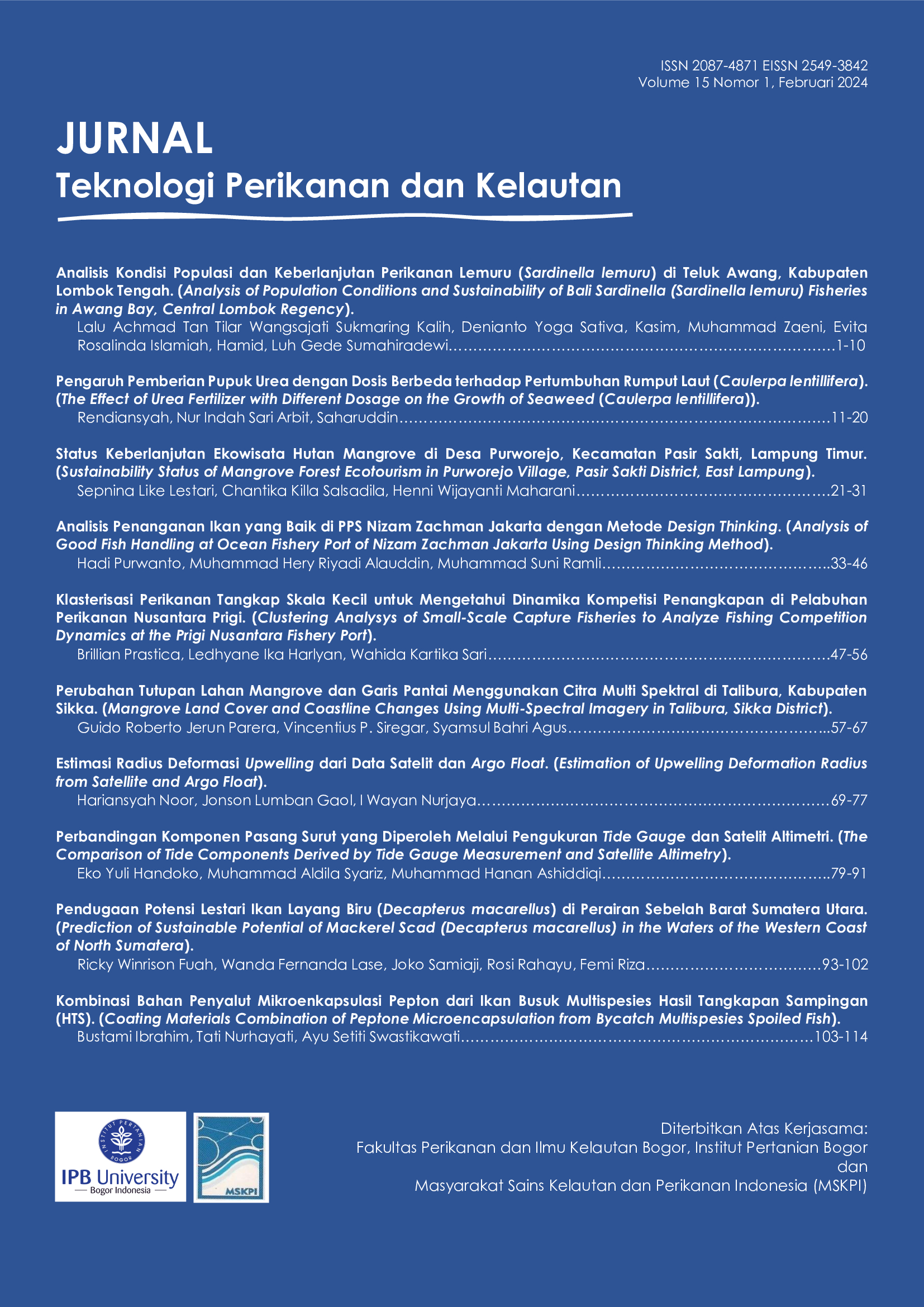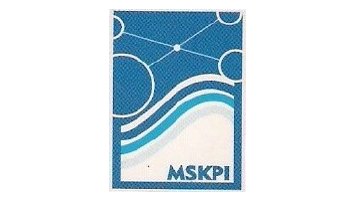ESTIMASI RADIUS DEFORMASI UPWELLING DARI DATA SATELIT DAN ARGO FLOAT
Abstract
Upwelling is the process of seawater mass rising from the lower layers to the surface due to surface pressure differences. The upwelling process will increase the fertility of the waters because the water mass in the deep layer rises to the surface which is rich in nutrients needed by phytoplankton to grow. The extent of the upwelling area (deformation radius) will determine the impact of the upwelling process in the waters. This research aims to analyze the upwelling process and deformation radius from thermal sensor satellite data. The data used were daily thermal satellite data and monthly averages during 2014-2018. Data from the Argo buoy was used to validate the satellite data and calculate the upwelling deformation radius. Statistical analyses such as correlation, Root Mean Square Error (RMSE), bias, and standard deviation were applied to test the accuracy of the satellite estimation of the Sea Surface Temperature (SST) data. Deformation radius calculation data from Argo showed that in the eastern season of upwelling, the SST ranged between 24 to 26ºC, otherwise normally it ranged between 27 to 29ºC. The correlation between SPL from satellite data and SPL data from Argo is 0.92, the RMSE value was 0.0236, the bias was 0.017, and the standard deviation was 0.287. The correlation coefficient between the deformation radius from in situ data and satellite data was calculated to be high (r=0.9), indicating that satellite imagery can be used to determine the deformation radius.
Copyright (c) 2024 Jurnal Teknologi Perikanan dan Kelautan

This work is licensed under a Creative Commons Attribution-NonCommercial 4.0 International License.




















